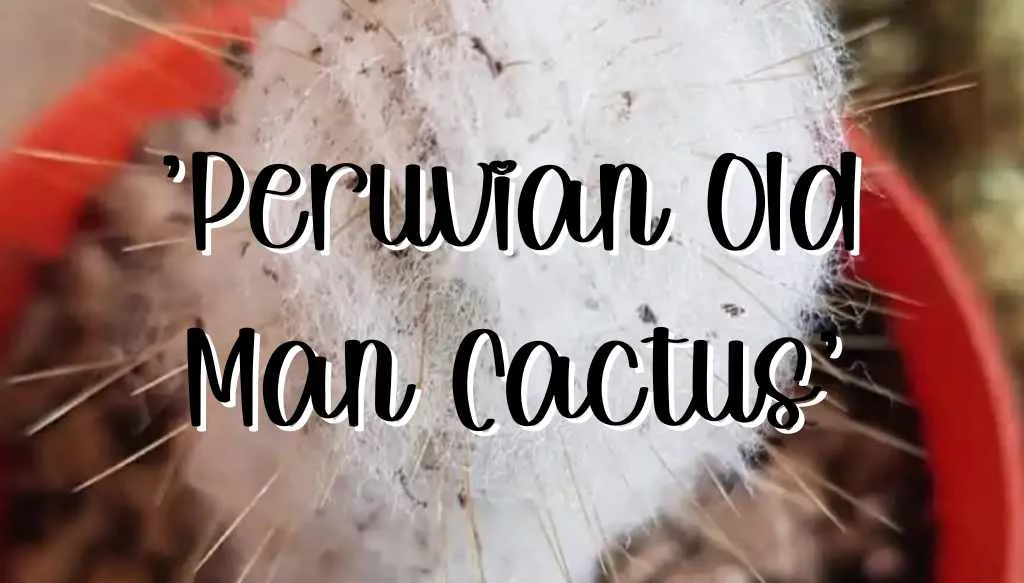Welcome to our comprehensive care guide for the ‘Peruvian Old Man Cactus’, scientifically known as Espostoa lanata. In this article, we will provide all the necessary information to help you successfully care for this unique succulent. As succulent enthusiasts, we assume you already have a basic understanding of succulents and their care requirements. So, let’s dive right into the specifics of the ‘Peruvian Old Man Cactus’ Espostoa lanata.
Dig in!
Common Names
‘Peruvian Old Man Cactus’ Espostoa lanata is also commonly known as the Wooly Torch or Peruvian Snowball Cactus due to its distinctive appearance.
Plant Description and Size
‘Peruvian Old Man Cactus’ Espostoa lanata is a columnar cactus that features dense white hair-like spines covering its surface, giving it a fuzzy and wooly appearance. It can grow to impressive heights, reaching up to 10 feet (3 meters) tall in its natural habitat. However, when grown as a houseplant, it usually remains more compact, reaching heights of around 2 to 4 feet (60 to 120 centimeters).
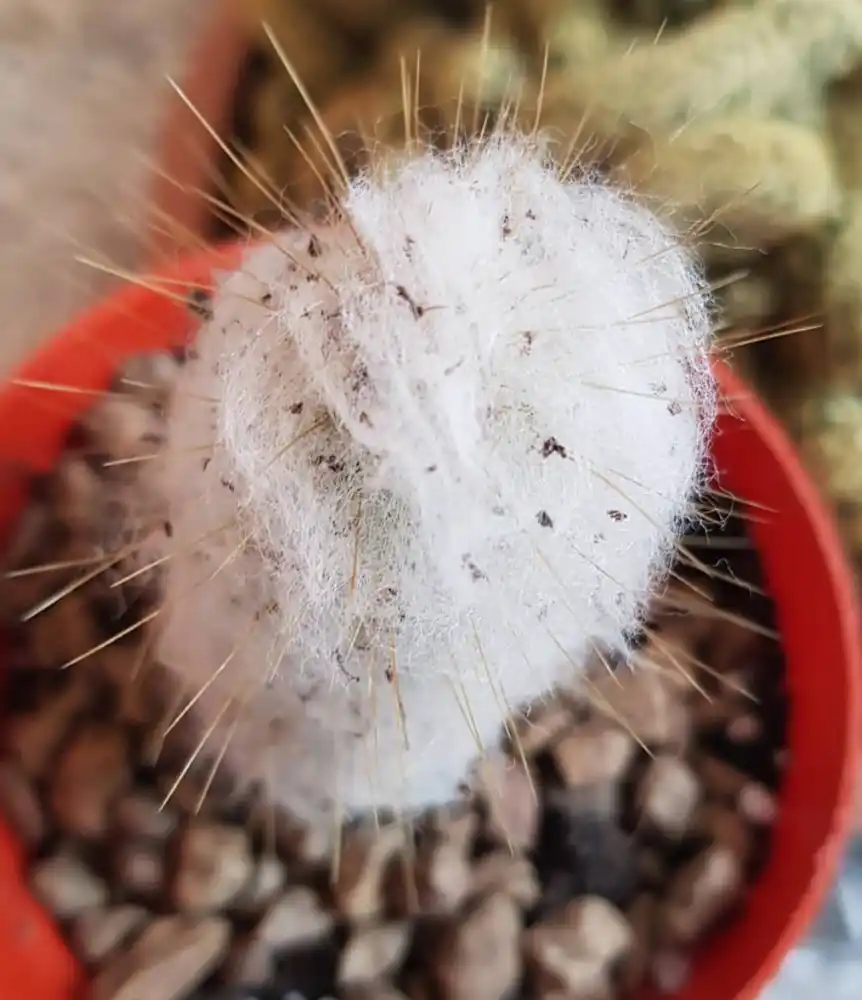
Flowers and Blooming
While ‘Peruvian Old Man Cactus’ Espostoa lanata is known for its unique appearance, it rarely produces flowers when grown as a houseplant. However, in its natural habitat, it can bloom during the summer months. The flowers are prominent and tubular, typically white or cream in color, and can appear all over the cactus.
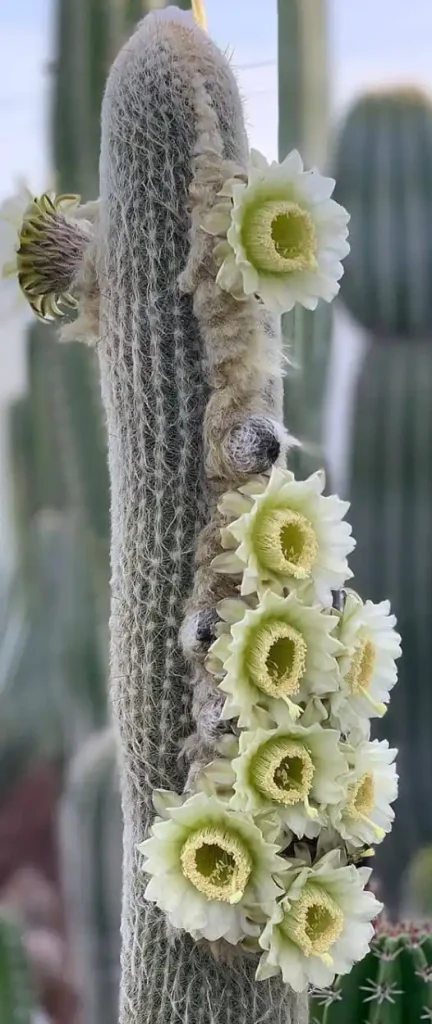
‘Peruvian Old Man Cactus’ Espostoa lanata Care Guidelines
To ensure the health and longevity of your Peruvian Old Man Cactus, it’s crucial to provide the appropriate care. Let’s explore the key aspects of caring for this fascinating succulent.
Light Requirements
‘Peruvian Old Man Cactus’ Espostoa lanata thrives in bright, indirect light. It is best to place it near a window that receives filtered sunlight throughout the day. Avoid exposing it to direct sunlight, as it can lead to sunburn and damage your Espostoa lanata.
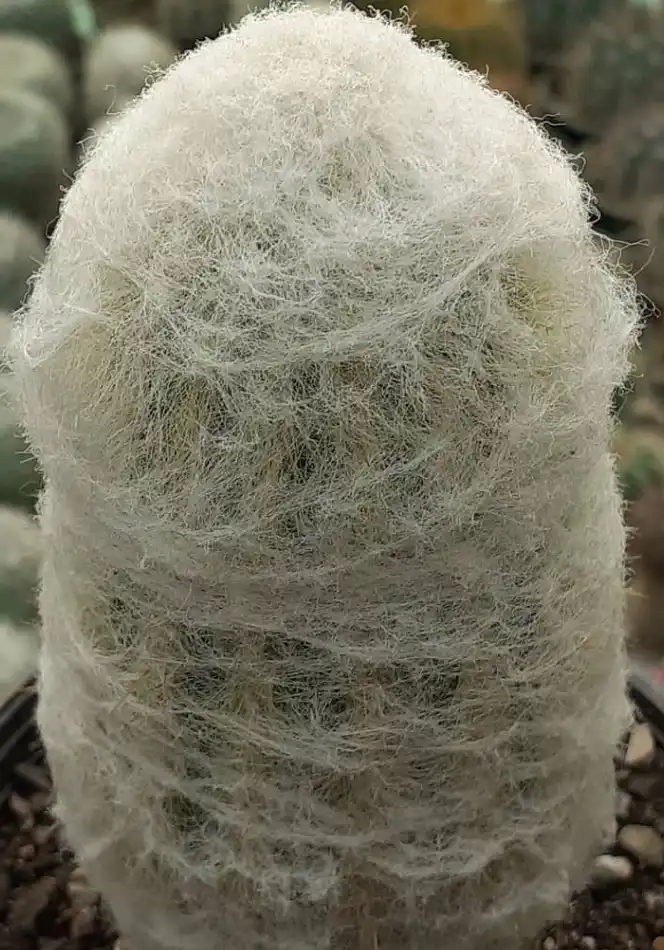
Watering Frequency
As a succulent, ‘Peruvian Old Man Cactus’ Espostoa lanata has low water needs. It is highly adapted to arid conditions and can store water in its tissues. Allow the soil to dry out completely between waterings. During the active growing season (spring and summer), water your Espostoa lanata thoroughly, ensuring that excess water drains out of the pot. In the dormant period (fall and winter), reduce watering frequency significantly to mimic the plant’s natural conditions.
You might also like: How & When to Water Succulents So They Don’t Die (2023 Update)
Soil Requirements
‘Peruvian Old Man Cactus’ Espostoa lanata requires well-draining soil to prevent root rot. A mix formulated specifically for cacti and succulents, containing materials like perlite, pumice, or coarse sand, is ideal. This type of soil allows excess water to drain quickly and helps prevent waterlogged roots.

Consider amending your soil with Bonsai Jack’s gritty mix to ensure your succulent soil drains quickly to prevent it from staying moist for too long. Source: Etsy
Temperature Tolerance
‘Peruvian Old Man Cactus’ Espostoa lanata is native to the high-altitude regions of Peru, where temperatures can be cooler. It can tolerate temperatures as low as 30°F (-1°C). However, as a houseplant, it is best to keep it in temperatures ranging from 50°F to 85°F (10°C to 29°C) for optimal growth.
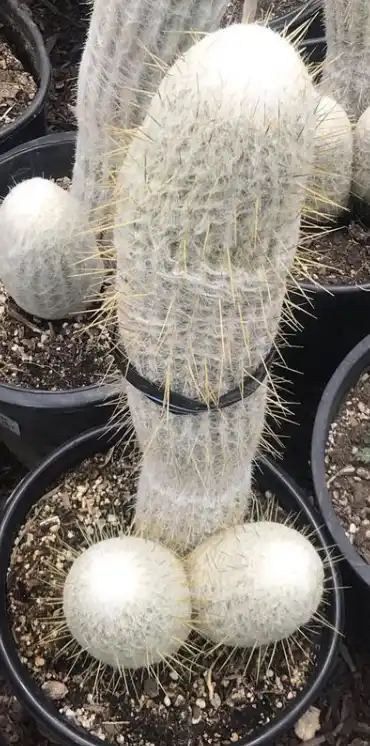
USDA Hardiness Zone
‘Peruvian Old Man Cactus’ Espostoa lanata is not winter-hardy and is typically grown as a houseplant or in containers. It is recommended for USDA hardiness zones 10 to 11, which have milder climates.
Fertilizing Needs
To promote healthy growth, feed your Peruvian Old Man Cactus with a balanced, diluted succulent fertilizer during the active growing season (spring and summer). Follow the instructions on the fertilizer packaging for proper dilution and frequency. Avoid fertilizing during the dormant period.

Succulent fertilizer available to purchase on Etsy.
Propagation Methods
The easiest way to propagate ‘Peruvian Old Man Cactus’ Espostoa lanata is through stem cuttings. Cut a healthy stem from the main plant, allow it to dry out for a few days, and then plant it in a well-draining cactus mix. Keep the soil lightly moist until roots develop, which usually takes a few weeks.
Pests and Pest Control
‘Peruvian Old Man Cactus’ Espostoa lanata is generally resistant to pests. However, it can occasionally attract mealybugs or scale insects. If you notice any signs of infestation, such as cottony white masses or small bumps on your Espostoa lanata, treat them with a cotton swab dipped in rubbing alcohol. Regularly inspect your plant to catch any pest issues early.
Common Problems and Solutions
One common issue with ‘Peruvian Old Man Cactus’ Espostoa lanata is root rot caused by overwatering or poor drainage. To prevent this, ensure that the pot has drainage holes and use a well-draining soil mix. If you notice signs of rot, such as blackened or mushy roots, remove the affected parts and repot your Espostoa lanata in fresh soil.
Growing ‘Peruvian Old Man Cactus’ Espostoa lanata Indoors
‘Peruvian Old Man Cactus’ Espostoa lanata can thrive indoors if provided with the right conditions. Place it in a location with bright, indirect light and ensurethat it receives proper airflow. Rotate your Espostoa lanata occasionally to promote even growth. Indoor humidity levels are usually lower than those in its natural habitat, which is beneficial for your Espostoa lanata. Avoid placing it near drafts or heating vents, as the dry air can cause dehydration.
Repotting
Repotting is typically necessary every 2 to 3 years or when your Espostoa lanata outgrows its current container. Choose a pot that is slightly larger than the current one and has drainage holes. Use a well-draining cactus mix and gently remove your Espostoa lanata from its current pot, being careful not to damage the roots. Place your Espostoa lanata in the new pot, backfill with fresh soil, and lightly compact it around the base of your Espostoa lanata. Allow the plant to settle for a few days before watering.
When you’re rooting or transplanting your succulents and cacti, use SUPERthrive to help reduce the chance of transplant shock and grow a strong root system.
The ’Peruvian Old Man Cactus’, or Espostoa lanata, is a fascinating and unique succulent that can be a wonderful addition to your collection. By providing the right care, such as bright indirect light, well-draining soil, and appropriate watering, you can enjoy your Espostoa lanata’s distinctive appearance for years to come. Remember to adjust your care routine based on the specific conditions of your environment, and always observe your plant for any signs of stress or issues. With proper care, your ‘Peruvian Old Man Cactus’ will thrive and bring joy to your succulent collection.

